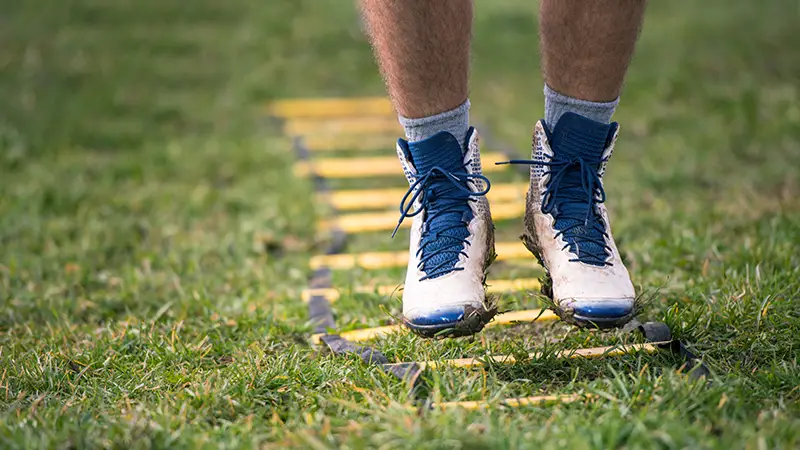Aging is an inevitable aspect of life, and with it comes changes in both our physical and mental well-being.
While it is true that the aging process can bring about certain challenges, it’s crucial to recognize that many of these challenges can be mitigated or even prevented.
Mental and physical rigidity, which often accompanies the aging process, can significantly impact one’s quality of life. Mental rigidity manifests as inflexibility in thought patterns and beliefs, while physical rigidity involves stiffness and reduced mobility in the body.
In this modern age, there is a wealth of knowledge and resources available to help individuals maintain their mental and physical flexibility as they age.
This article explores how to avoid the mental and physical rigidity of getting older, helping individuals embrace the later stages of life with resilience and vigor.
How To Avoid Mental And Physical Rigidity Of Getting Older
Mental rigidity can become a challenge as we age, but there are several strategies that can help you stay mentally flexible and open-minded. Here are some effective tips on how to avoid the mental rigidity of getting older:
Continual Learning
Embrace lifelong learning by pursuing new interests, taking up hobbies, or enrolling in classes. Learning keeps your mind active and open to new ideas.
Whether it’s a language, a musical instrument, or a new skill, the process of acquiring knowledge keeps your brain adaptable.
Cultivate Curiosity
Stay curious about the world around you. Ask questions, explore, and seek out diverse perspectives. Curiosity fosters an open mindset and encourages you to challenge preconceived notions.
Make it a habit to read, watch, and engage with content that expands your horizons.
Stay Social
Maintain a rich social life. Interacting with people of different ages, backgrounds, and experiences can broaden your perspective and prevent isolation.
Engaging in meaningful conversations fosters flexibility in your thinking as you’re exposed to different viewpoints.
Mindfulness and Meditation
Practicing mindfulness and meditation can help you become more aware of your thought patterns. It allows you to step back from rigid thinking and become more open to the present moment.
These practices can reduce stress, and anxiety, and help you adapt to new situations more easily.
Stay Physically Active
Regular exercise isn’t just beneficial for your body; it also has a positive impact on your brain. Physical activity increases blood flow to the brain, promotes the growth of new neurons, and supports cognitive flexibility.
Exercise helps you remain mentally agile and adaptable as you age.
Challenge Your Assumptions
Actively challenge your own assumptions and beliefs. Recognize that your worldview may not always be complete or accurate. Engage in critical thinking and expose yourself to different viewpoints and experiences that challenge your preconceptions.
Set Realistic Goals
Continue setting goals and aspirations for yourself. These goals can be both short-term and long-term. They give you a sense of purpose and motivation to stay mentally active and adaptable.
Achieving your goals can also boost your confidence and open you up to new experiences.
Incorporating these tips into your life can help you maintain mental flexibility and an open mindset as you age. Remember that mental rigidity can be overcome with intentional effort and a commitment to personal growth and development.
7 Exercises to Prevent Physical Rigidity as You Get Older
Preventing physical rigidity as you age is essential for maintaining mobility, independence, and overall quality of life. Regular exercise can play a crucial role in achieving this goal. Here are seven exercises that can help prevent physical rigidity as you get older:
1. Neck Stretches

These stretches can help reduce stiffness and pain in your neck muscles. You can do them in different directions, such as forward, backward, and sideways.
To do a neck stretch, gently move your head in one direction until you feel a gentle pull. Hold for 20 counts and repeat 3 times on each side. You can also apply some pressure on your chin with your hand for more intensity.
2. Weight-bearing Exercises

These exercises can help maintain your bone mass and prevent osteoporosis.
Weight-bearing exercises are those that make your bones and muscles work against gravity, such as walking, jogging, climbing stairs, or lifting weights.
You should aim for at least 30 minutes of moderate-intensity weight-bearing exercise at least 3 times a week.
3. Swimming

Swimming is a low-impact exercise that can improve your flexibility, strength, and cardiovascular health. Swimming can also reduce spasticity, which is a condition where your muscles become tight and rigid due to nerve damage.
Swimming can relax your muscles and improve your range of motion. You can swim in different styles, such as freestyle, backstroke, or breaststroke, depending on your preference and ability.
4. Yoga

Yoga is a mind-body practice that combines physical poses, breathing techniques, and meditation. Yoga can help reduce stress, improve balance, and enhance your well-being.
Yoga can also help prevent rigidity by increasing your flexibility and muscle tone. You can practice yoga at home or join a class that suits your level and needs.
Some of the common yoga poses that can help prevent rigidity are a downward-facing dog, cat-cow, child’s pose, and cobra pose.
5. Gait Training Exercises

These exercises can help improve your walking ability and prevent falls. Gait training exercises involve improving the motion of your lower extremity joints, strengthening your muscles, and mimicking the repetitive nature of walking.
Some examples of gait training exercises are walking on a treadmill, lifting your legs, sitting down and standing up, and stepping over objects. You can do these exercises with or without the assistance of a physiotherapist or a device.
6. Vocal Exercises

These exercises can help prevent rigidity in your vocal muscles which can affect your speech and swallowing.
Vocal exercises involve producing different sounds, such as humming, singing, or reading aloud. You can also practice breathing deeply and exhaling slowly to relax your vocal cords. You can do these exercises on your own or with the guidance of a speech therapist.
7. Relaxation Techniques

These techniques can help reduce tension and stress in your body and mind which can contribute to rigidity. Relaxation techniques include deep breathing, progressive muscle relaxation, guided imagery, meditation, and massage.
You can practice these techniques anytime and anywhere you feel comfortable and calm. You can also use music, aromatherapy, or candles to enhance your relaxation experience.
What Causes Psychological Rigidity?

Psychological rigidity can result from a variety of factors and life experiences. Understanding the underlying causes can help in addressing and managing this rigidity.
Here are the reasons for psychological rigidity:
Trauma and Stress
Experiencing trauma or high levels of stress can lead to psychological rigidity. Traumatic events can trigger a survival mode response in the brain, causing individuals to become more focused on familiar and safe patterns of thought and behavior, making it difficult to adapt to new situations.
Fear of Uncertainty
A strong fear of uncertainty and the unknown can foster rigidity. People may cling to familiar routines and beliefs because they provide a sense of stability and predictability, even if those routines are no longer serving their best interests.
Cognitive Biases
Cognitive biases, such as confirmation bias and the availability heuristic, can contribute to rigidity by reinforcing preexisting beliefs and preventing individuals from considering alternative viewpoints or information that contradicts their beliefs.
Cultural and Social Conditioning
Cultural norms and social expectations can exert a significant influence on an individual’s mindset. People may become rigid in their thinking and behavior to conform to societal norms, often at the expense of their own authentic desires and values.
Perfectionism
Striving for perfection can lead to psychological rigidity. The intense need for flawlessness and the fear of making mistakes can make individuals unwilling to adapt to new situations or explore unfamiliar paths, as they fear failure or imperfection.
Lack of Exposure to Diversity
Limited exposure to diverse perspectives and experiences can result in rigidity. Without exposure to different ideas and cultures, individuals may become entrenched in their own worldviews and resist change.
Neurobiological Factors
Some individuals may have a biological predisposition to psychological rigidity. Brain chemistry, genetics, or neurological conditions can impact one’s ability to adapt to change and think flexibly.
Psychological rigidity is a complex phenomenon that often results from a combination of these factors. Recognizing these underlying causes is the first step toward addressing and mitigating rigidity, allowing for personal growth and adaptability.
How does The Aging Brain affect thinking?

The aging brain undergoes various changes that can affect thinking and cognitive functions. Here are some ways in which the aging brain can influence thinking:
Slower Processing Speed
As people age, the speed at which the brain processes information tends to decrease. This can lead to slower reaction times, difficulty with tasks that require quick decision-making, and a reduced ability to process complex information rapidly.
It’s important to be patient and allow more time for cognitive processing in older adults.
Memory Decline
Memory decline is a common feature of aging. Both short-term and long-term memory may be affected, making it challenging to remember names, appointments, and details of recent events.
However, long-term memories formed in earlier years are often retained better than recent memories.
Reduced Cognitive Flexibility
Older adults may experience a decrease in cognitive flexibility, which is the ability to adapt to new situations or switch between tasks. This can manifest as resistance to change, difficulty learning new skills, or finding it challenging to multitask.
Impaired Working Memory
Working memory, which involves holding and manipulating information temporarily, can deteriorate with age. This can affect problem-solving abilities, mental arithmetic, and the ability to manage multiple pieces of information simultaneously.
Language and Communication Changes
Aging can impact language and communication skills. Vocabulary may decline, and it can be more challenging to find the right words during conversations.
Comprehension may also become slower, affecting listening and understanding complex language.
Attention and Concentration Issues
Maintaining focus and sustained attention can become more challenging with age. Distractions may have a more significant impact, making it harder to concentrate on tasks that require prolonged mental effort.
Emotional Regulation
The aging brain can influence emotional regulation, leading to changes in mood and emotional responses. Older adults may be more prone to depression, anxiety, or mood swings.
Emotional resilience and the ability to adapt to stressors may be reduced.
It’s important to note that these effects can vary from person to person, and they are influenced by a combination of genetic factors, lifestyle choices, and overall health.
While some cognitive decline is a natural part of aging, staying mentally and physically active, maintaining a healthy lifestyle, and seeking social and intellectual engagement can help mitigate the impact on thinking and cognitive functions in later years.
FAQs
How does aging affect mental and physical rigidity?
Aging can lead to mental and physical rigidity due to various factors. Physically, a decrease in muscle mass, joint flexibility, and bone density can contribute to stiffness and reduced mobility. Mentally, cognitive decline, rigid thought patterns, and resistance to change can occur.
What can I do to maintain mental flexibility as I age?
To maintain mental flexibility, engage in lifelong learning, expose yourself to diverse experiences and viewpoints, practice mindfulness, and challenge your assumptions.
Stay socially active to broaden your perspective and seek new experiences that keep your mind adaptable.
How can I prevent physical rigidity as I get older?
Physical flexibility can be maintained through regular exercise, including stretching and strength training. A balanced diet and hydration are essential. Proper posture and ergonomics help prevent musculoskeletal issues, and regular medical check-ups can catch problems early.
Can a healthy lifestyle reduce mental and physical rigidity in aging?
Absolutely. Adopting a healthy lifestyle, including a balanced diet, regular exercise, and adequate sleep, can significantly reduce the risk of physical rigidity.
Staying mentally active, socially engaged, and managing stress through relaxation techniques can prevent mental rigidity.
What role does a positive mindset play in avoiding mental and physical rigidity in aging?
A positive mindset can be a powerful tool. It promotes resilience, reduces stress, and encourages adaptability. By focusing on your abilities and seeking joy in new experiences, you can maintain mental and physical flexibility as you age.
Conclusion
As we conclude our exploration of how to avoid mental and physical rigidity in the process of aging, it becomes evident that proactive measures can significantly impact the way we experience our later years.
Aging need not be synonymous with rigidity and decline; rather, it can be a phase of life marked by adaptability, growth, and vitality. By following the tips and strategies discussed in this article, individuals can enhance their cognitive flexibility and maintain physical mobility.
It is important to remember that aging is a dynamic and diverse process, with each individual experiencing it uniquely.
The key to successfully avoiding mental and physical rigidity lies in a combination of physical activity, mental stimulation, social engagement, and a commitment to a healthy lifestyle.
By implementing these strategies, one can savor the richness of life’s later chapters and continue to embrace new experiences, fostering a sense of fulfillment and well-being throughout the aging journey.
I am a fitness instructor and I have been in the industry for 9 years. I have a passion for health and fitness.
I am a fitness instructor with over 9 years of experience in the industry. My passion is health and fitness and I would love to share my knowledge with you!